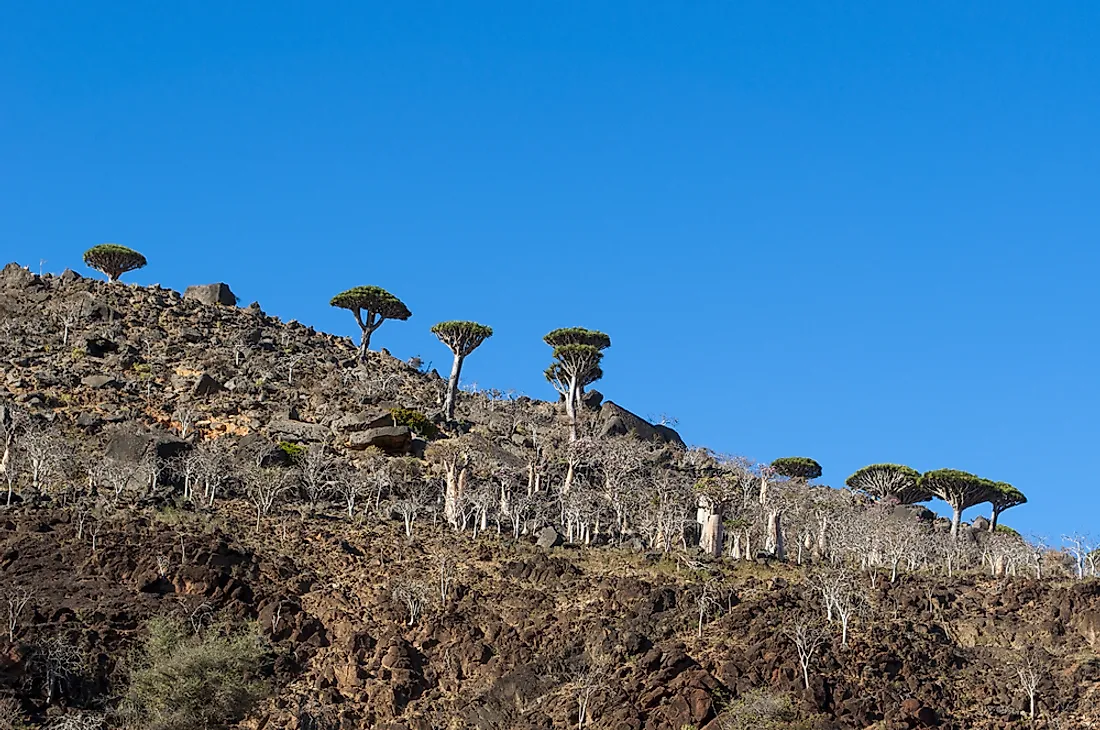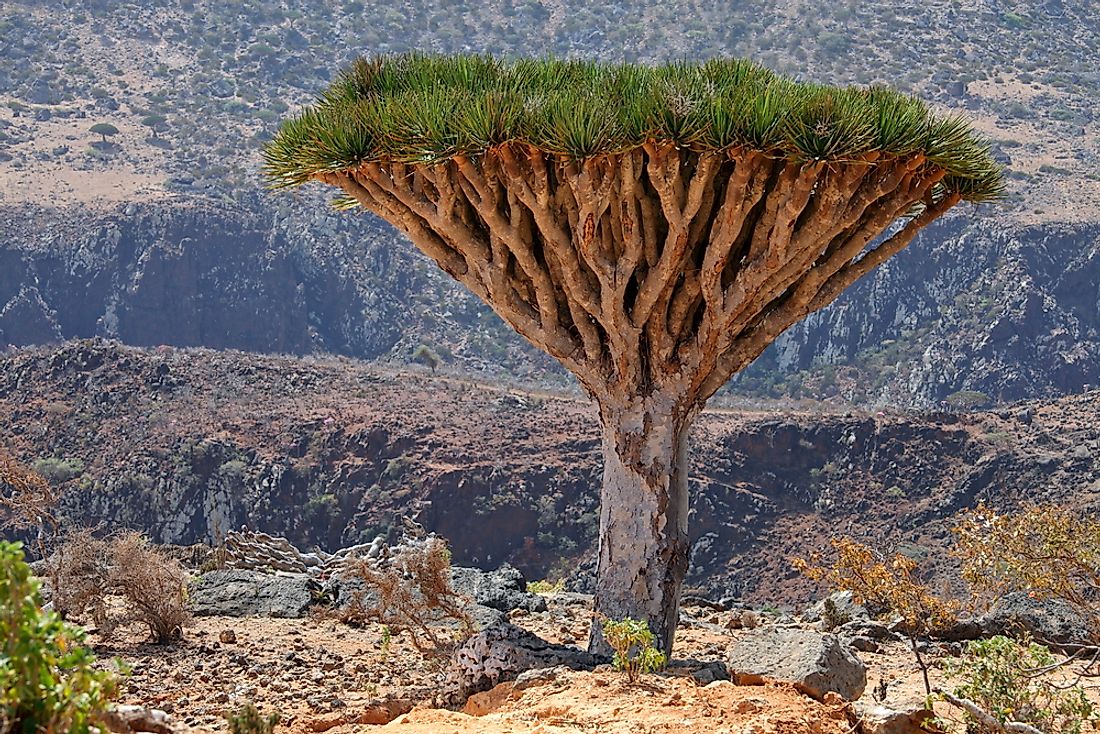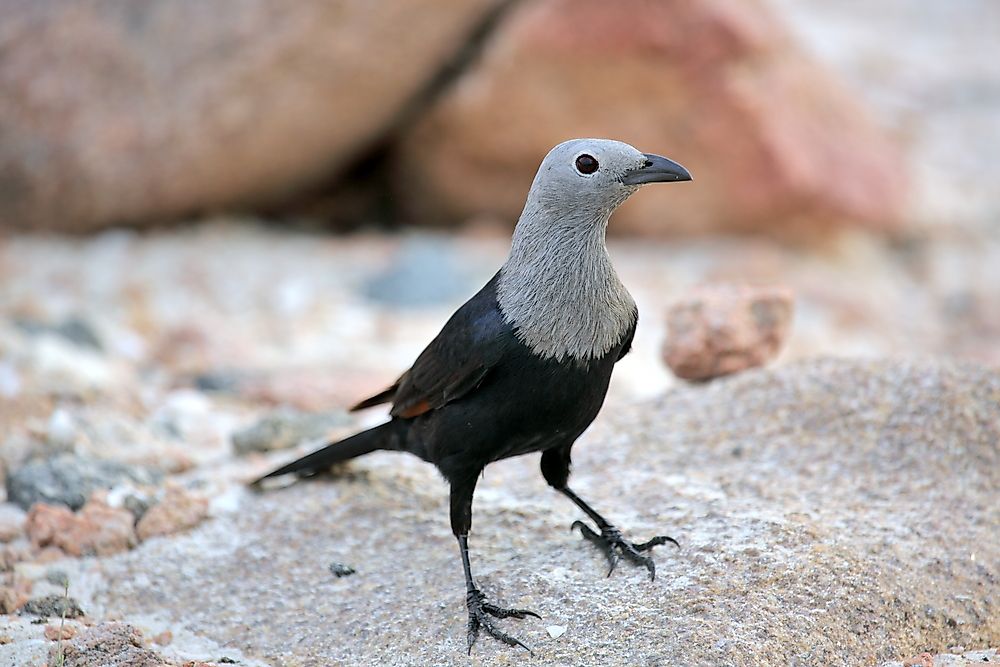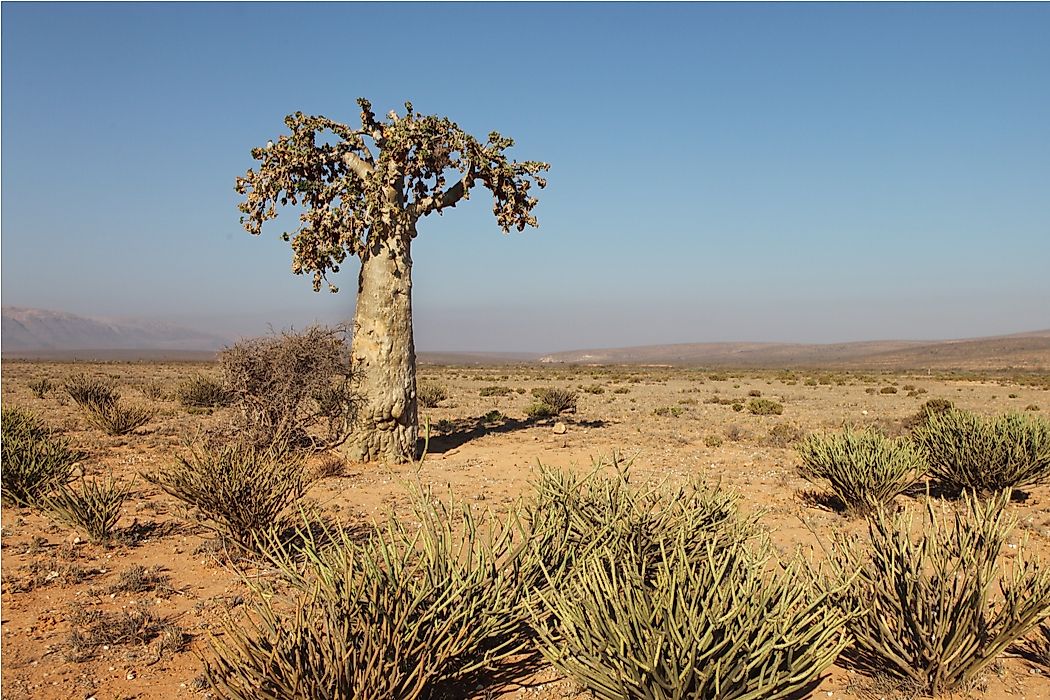Animals and Plants Found on Socotra

Socotra Island, which is 220 miles away from Yemen, is home to many endemic species. It has an array of bizarre creatures and plants that have great adaptations to Socotra’s ecosystem. Socotra is home to about 800 rare kinds of plants and animals and about a third of these species are endemic, as they cannot be found anywhere else globally. The flora and fauna of Socotra have adapted to the unkind environment including hot and dry conditions hence resulting to their unique appearances. The unique species that have great adaptations to Socotra’s ecology include plants like the Dragon's Blood tree and Cucumber tree. On the other hand, the exceptional fauna encompasses the Socotra Starling, Grosbeak, Sunbird, Warbler, and the Socotra Chameleon as discussed below.
7. Socotra Sunbird
The Socotra Sunbird, also known scientifically as Chalcomitra balfouri is a kind of bird that is found in the family group of Nectariniidae and is an endemic species of Socotra Island. Its adaptations are almost similar to that of the Socotra Starling bird as it can survive in ecosystems that are humid tropical scrubland, and high-altitude shrubland. Socotra Sunbird is less endangered unlike other endemic species since its main danger is the loss of habitat. In appearance, it is gloomy brown with light streaking on the head, and it has few similar stripes on the feathers. Chalcomitra balfouri produces loud sounds that are diverse, it can be a sequence of quick or lengthy bursts of clattering melodies, and the bird is also impressive at mimicking. They feed on insects like cicadas, spiders, and fruits like the euphorbia. Regarding breeding, the sunbird lays between January and May. They have nests that have the shape of a dome.
6. Dragon Blood Tree

The Socotra dragon tree or dragon blood tree (Dracaena cinnabari) is one of Socotra’s prominent plants. It has a unique and weird look of an umbrella-like shape; it is inverted, and looks like a heavily packed crown. The tree got its name from its red fluid that has some form of resemblance to dragon’s blood. The sap oozes naturally from fractures and sores in the bark. The fluid from the dragon blood tree has several functions including medicinal purposes as an antiseptic and for tumor treatment, and it works as paint. The dragon blood tree is also known for its features of being an evergreen endemic species. It is monocotyledonous as it develops with long stiff leaves with dense bunches during its growth from the stem’s tip.
5. Socotra Gosbeak
The Socotra grosbeak or the Socotra golden-winged grosbeak is scientifically known as the Rhynchostruthus socotranus and is considered a discrete kind as it is only found on Socotra landmass. The species has an odd appearance in relation to gender, whereby, the male grosbeak is chocolate in color with a dark beak and head, yellow spots on the wings and appendage, and its cheeks have snowy spots. The feminine also has similar resemblance except that they appear gloomier, while the minors lack the unique head design and are fairly striped. The golden-winged grosbeak is comfortable and has great adaptation to diverse habitats from forests, highlands, arid-scrub to marine level.
4. Socotra Starling

Socotra Starling, whose scientific name is Onychognathus frater, is a kind of starling in the Sturdinae grouping. It is a species of bird that can only be found in Socotra and is in danger of losing its locale. According to Richard Porter, the Socotra Starling is very flexible, social, and malleable. Moreover, it can withstand different types of environment as observed from its variety of homes. Socotra Starling is comfortable in vegetation like the subtropical or tropical humid land, tropical dry forests, dry shrub-lands, and even precincts. Socotra Starling is quite big, dark, has a long tail, and its feathers are consistently shiny black. The Starling’s nutrition comprises of insects and fruits. Mostly, the fruits include the dragon blood tree and zizyphus. Besides, the starling’s incubation takes place in November and breeding occurs between December to March.
3. Socotra Warbler
Incana incana is the scientific name that was given to the Socotra warbler, which belongs to the Cisticolidae group. It is the only existing type under the Incana species and can only be found in Socotra. The Socotra warbler mostly inhabits cool tropical shrub land or tropical arid shrub land but it is faced with risks of losing its habitat since most vegetation has been shattered by extreme grazing and deforestation. Socotra warbler is slightly longer with an extensive appendage; its face and neck have a cream shade. It mostly feeds on insects, and regarding sound, it is rarely heard as it is discreet although it produces a faintly uncertain quaver. The warbler builds its nest from grass and beautifies it with lichen. The nest looks like an orderly ball and often has its entry on the side.
2. Cucumber Tree

The cucumber tree, which can also be referred to as Dendrosicyos socotranus, is an endemic species, which is parts of Socotra’s flora. The tree is said to have a weird and peculiar appearance because of its gigantism and its bottle-like shape. It is referred to as bottle tree because of its trunk, which is cylindrical and swollen. The dendrosicyos socoranus has at no time achieved any superior tallness. It is recognized for its smooth, plain, firm stems and exceptionally few suspended branches. The tree normally develops to one meter wide and two meters long while its leaves are shaped like a heart and have a thick, coarse surface enclosed with tiny prickles that spike less with time. Socotra cucumber tree’s flowers are yellow, and its fruits are cylinder-shaped and are sharp on both ends. For the cucumber tree to survive, it requires dry weather conditions with lots of heat and fierce winds. The plant can be used for medicinal benefits to treat diseases like diabetes, urinary problems, and liver issues. It is also beneficial for ornamentation and nutrition purposes.
1. Socotran Chameleon
Socotra chameleon also scientifically recognized as chameleo monachus is a reptile and is prevalent in Socotra’s archipelago and cannot be found anywhere else. Chameleo monachus is capable of mutating the pigment of its skin to resemble that of its environment thus becoming inconspicuous. When startled, Socotra chameleon produces a heckling sound according to its frame of mind. Although it is not highly threatened, it is threatened by overgrazing.











